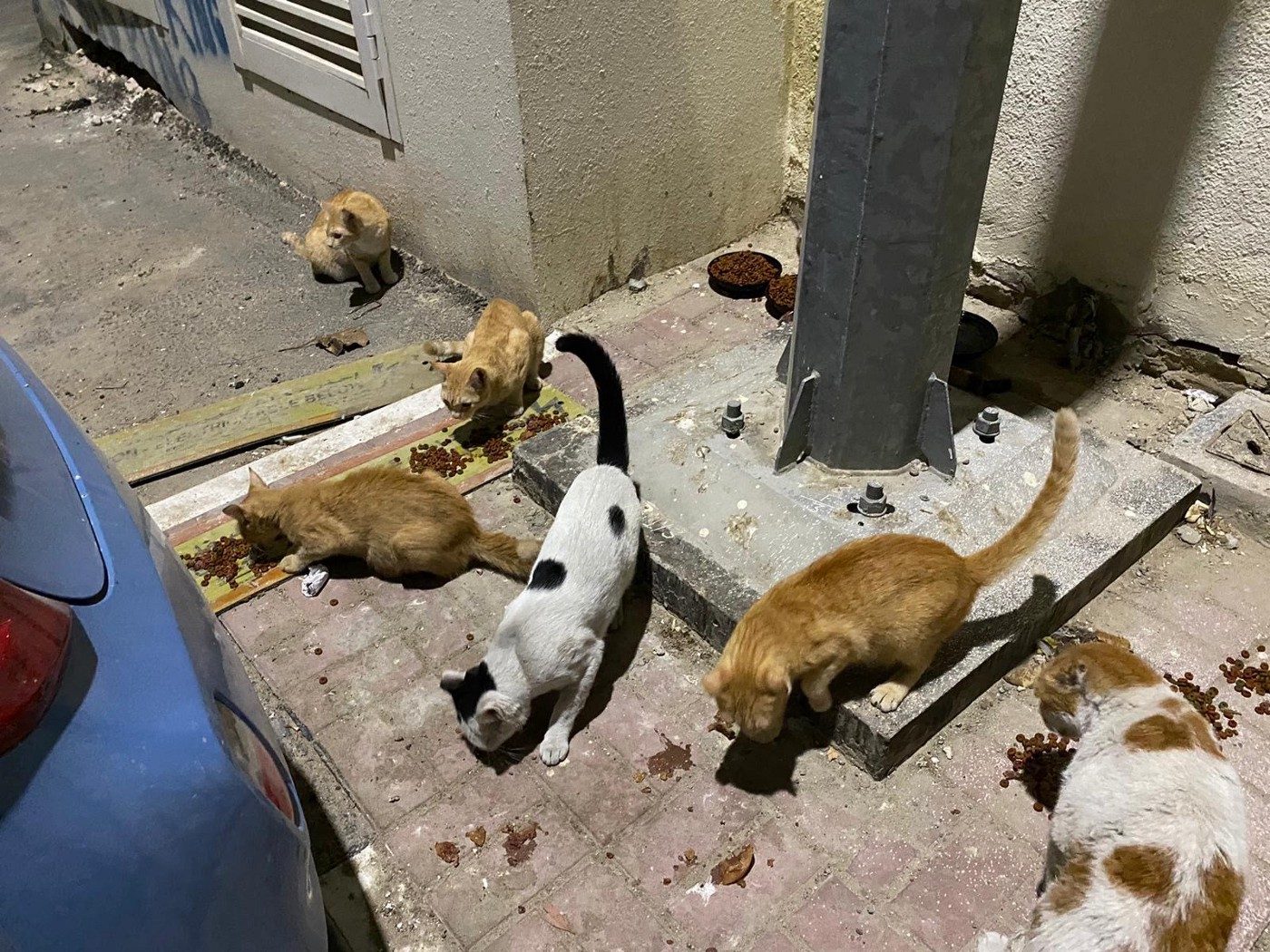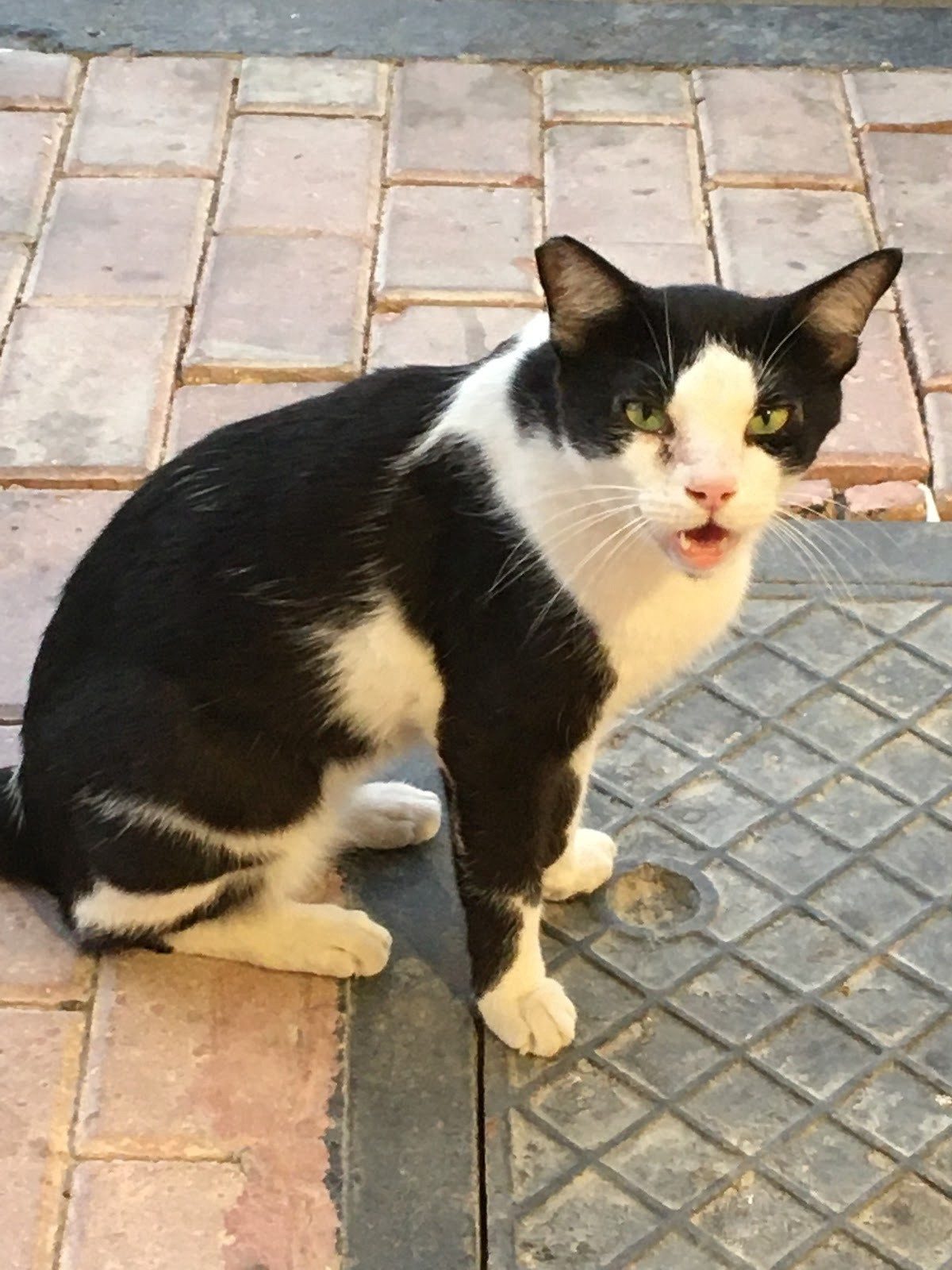Article by Laura Rainbow, video by Farah Gomaa
Volunteers lead the way in Qatar’s battle to curb homeless cat populations, with a humane ‘trap, neuter, return’ programme.
You’re never far from a homeless cat in Doha. Under parked cars, rummaging in street corner bins, and lounging cautiously on the cool marble in doorways, you can find them trying to escape the sun or search for food and water.
Cute as they may be to some, a lot of people don’t actually like these animals, seeing them as a source of mess and annoyance. On top of that, a homeless cat’s suffering in a hot, busy city is immeasurable. They are often injured, starving, dehydrated or sick, with a much shorter life expectancy than that of a pet cat.
However, during that short life, your average homeless cat can reproduce a lot. It’s possible for one female to have ten kittens per litter, and to have a new litter every three months. There are even fewer limits on a male cat’s ability — or inclination — to make babies.
Trap, neuter, return (TNR) is a reasonably humane solution to the cat overpopulation problem. It reduces the number of new kittens being born and improves the adult cats’ quality of life.
What actually is TNR?
Essentially, a homeless cat is lured into a trap with food, then taken to a vet. The vet operates on the cat to ensure it can’t reproduce any more, and also to remove the tip of its ear — a simple way of marking that the cat should not be trapped again. The cat is given some time to recover in a safe, quiet place with food and water, then released back to the same location it was found. There it will live out the rest of its life with its colony, the size of which will dwindle over time.
The government’s own veterinary centre – part of the Ministry of Environment’s Department of Animal Resources – offers both trapping and spaying for free, although it usually takes only male cats. Doha News reached out to the department by social media, email and phone for comment on its work but has not yet received a response.
Much of the additional burden of TNR is picked up by volunteer groups and concerned individuals. Two such volunteers are Petra, a retired nursery teacher who does TNR in the Bin Omran area of Qatar, and Emma, a primary school teacher from the UK and volunteer from TNR Qatar. Between them, they have treated more than 300 cats to date.
https://www.facebook.com/dohanews/videos/371570327177895/
Petra, who is originally from Germany, says: “TNR is so important to stop the cats from breeding, then having kittens dying from thirst, hunger, injury or even abuse from humans. The colonies simply stop growing so there is less fighting for food and space and the remaining cats live better lives.
“Even though many individuals try to help by feeding cats — and I take my hat off to anyone who is kind to animals, especially those people who are struggling to pay for their own food — TNR is the long-term way to solve the situation. For me, it’s the most important thing we can do to help those poor animals who suffer so much on the streets of Qatar.”
Emma agrees: “My aim is to stop these cats being here and suffering in the first place. We just cannot rehome all these animals in Qatar — there are too many. So the most sensible solution is that they live out their days in a managed colony, where volunteers put out food and water and keep an eye on them.”

“It is very, very heartbreaking”
Of course while TNR aims to solve a problem, it can be upsetting for the volunteers — not to mention expensive, with one operation costing around QAR 300 at a private vet clinic.
Says Petra: “One of the worst things is when we trap a sick or injured cat, take it to the vet, and are told ‘we’re sorry but she is too bad and nothing can be done to save her.’ It is very, very heartbreaking.
“It’s also sad when you’re sure that you’ve done TNR on all the cats in a colony, and then suddenly you see a new kitten appear. And you know there’s more to be done. That’s why we always need volunteers and donations to help us — the work is never quite finished.”
Agrees Emma: “Sometimes it seems like it’s just never ending and there’s only so much volunteers can do without limitless funds or time.”
So, if it’s a constant uphill struggle that may never be complete, why continue?
“It’s great when you trap and neuter a female cat and you know she won’t have to have any more litters,” explains Petra. “She never has to watch another one of her kittens die of hunger, thirst or being run over by a car.
“And in general, you know that the cats you trap will live happier, healthier lives. Males will fight less and so avoid injuries, and there will be less starvation as competition for food dwindles.”
Emma says: “For every one cat we TNR, we are potentially saving hundreds of new cats being born into a life of suffering. The shelters are always going to be full, and strays are always going to be out there leading difficult, dangerous lives unless we stop the problem at its root.”
If you’d like to volunteer, donate or find out more, visit Kitties of Bin Omran on Facebook and head to TNR Qatar’s website.







